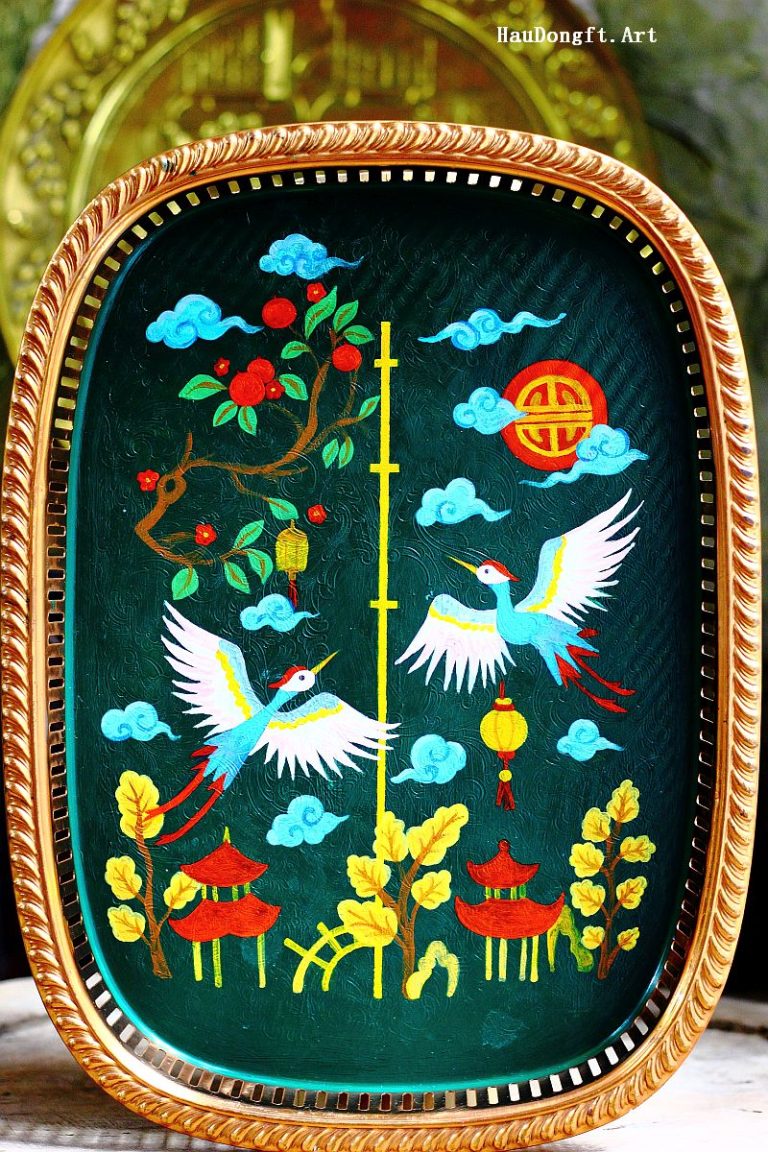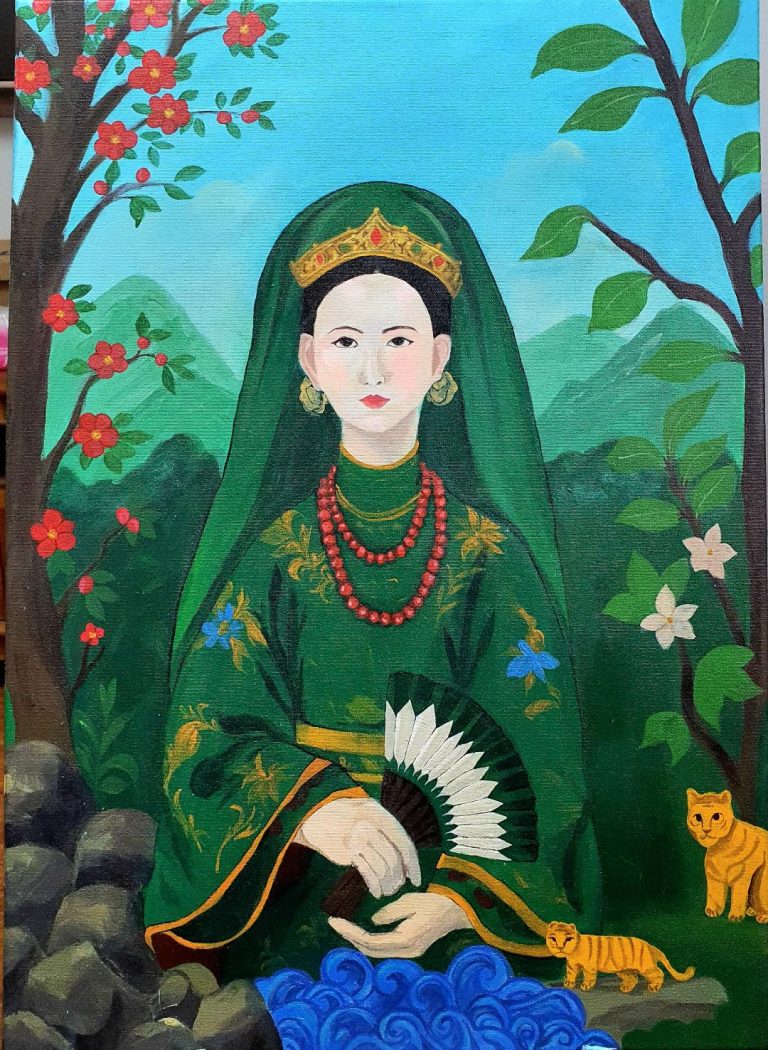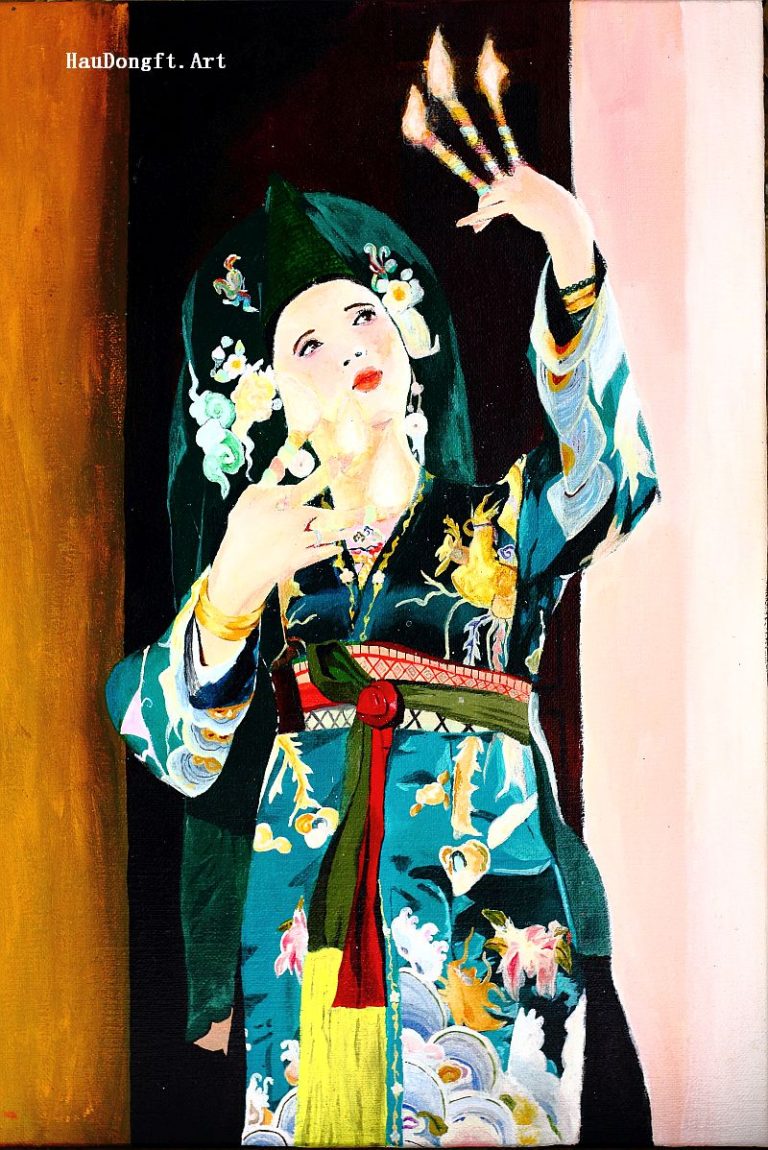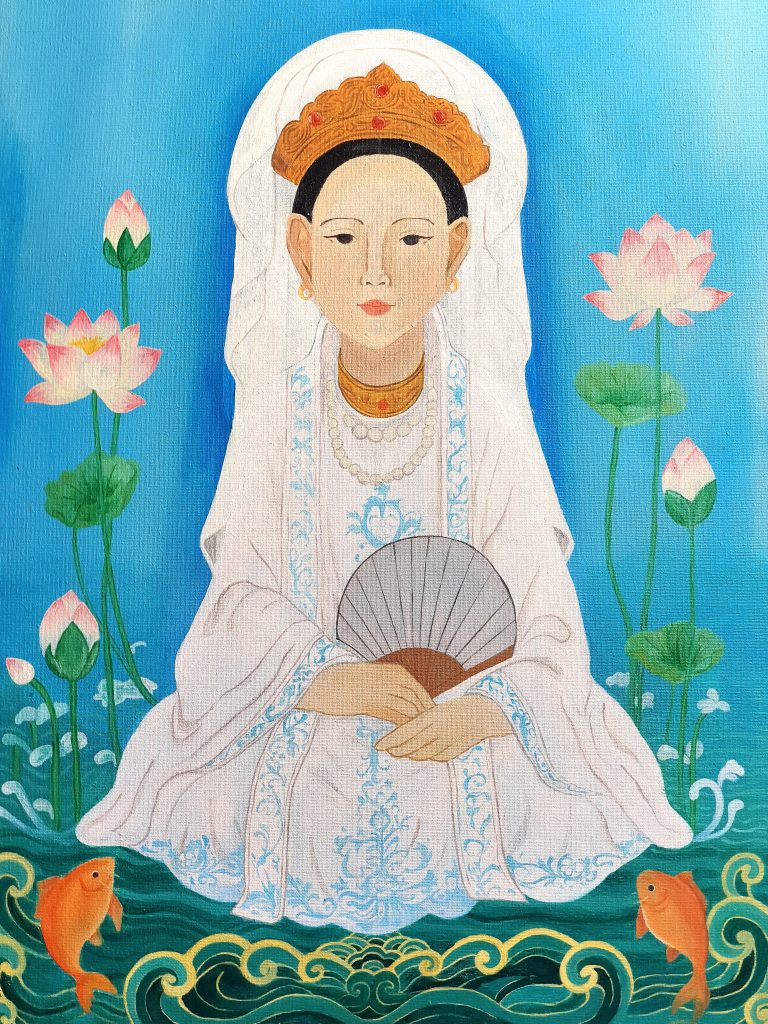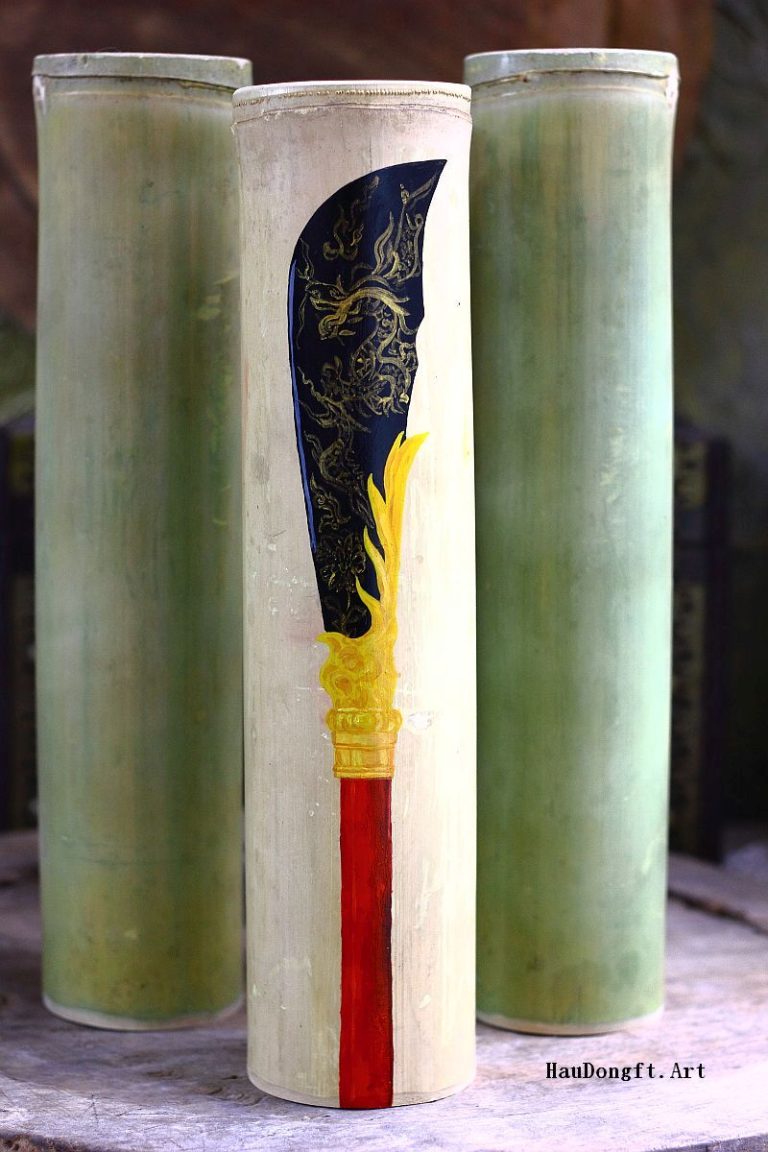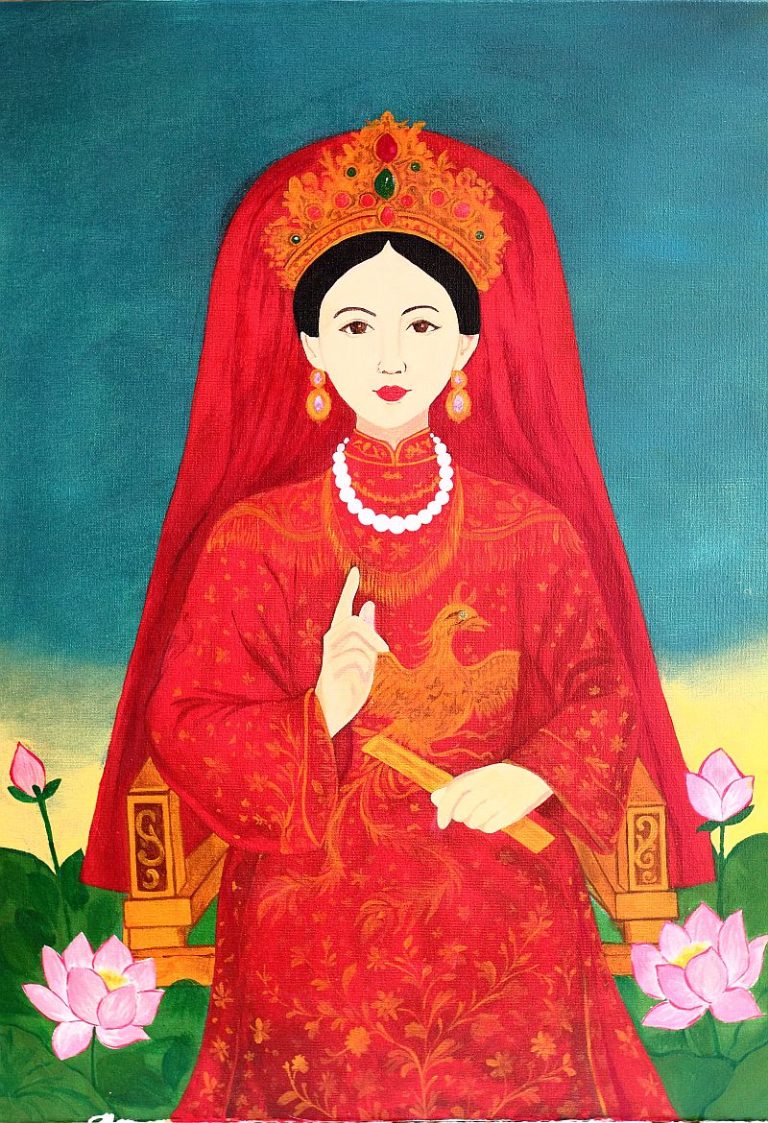Hầu đồng is a ritual in Vietnamese folk belief that is quite widespread, yet its essence remains mysterious and not fully understood. Because of this, many who are unfamiliar with it may dismiss it as superstition or extravagance. But what is its true nature? In this article, let us explore the genuine meaning of this practice, rich in national identity.
What is Hầu Đồng?
Hầu đồng, also known as lên đồng or hầu bóng, is a long-standing ritual in Vietnamese spiritual practice, divided into two main streams:
• The worship of the Mother Goddess (Đạo Mẫu) with the Three Palaces (Tam Phủ) and Four Palaces (Tứ Phủ).
• The worship of Saint Trần (Đức Thánh Trần).
At its core, hầu đồng is a form of communication with the divine through male and female mediums. It is believed that deities can enter these mediums—known as đồng nam (male) or đồng nữ (female)—when they reach a trance-like state, in order to heal illnesses, ward off evil spirits, deliver prophecies, and bestow blessings upon devotees. When possessed, the medium becomes a messenger, an embodiment of the divine.
Mediums (thanh đồng) are also referred to by names such as đồng nam, đồng nữ, ông đồng, bà đồng, cô, cậu. Male mediums are often described as having “half-male, half-female” temperaments, which is why men with such traits are sometimes called đồng bóng or đồng cô.
Each medium in a ritual is usually assisted by two or four attendants—called nhị trụ or tứ trụ hầu dâng—who help prepare the ceremony and costumes. The music that accompanies hầu đồng is a distinctive traditional genre known as chầu văn, which elevates the ritual and facilitates the descent of deities.
Worship Systems in Hầu Đồng
The Trần Dynasty Worship System
The Trần lineage has its own rules and worship traditions, distinct from Đạo Mẫu. It includes the worship of the Royal Father and Mother, Đức Thánh Trần, royal consorts, princes, holy maidens, and six male saints.
(Here, the term “House of Trần” refers not to a dynasty, but to the family of Trần Quốc Tuấn, also known as Hưng Đạo Đại Vương.)
Folk belief holds that these rituals are sacred and directly connect to the energy of the invoked deities. To conduct a Trần ritual, the medium must have a spiritual connection (căn) and receive blessings from the House of Trần. A distinctive feature of Trần séances is the ritual of xiên linh (piercing the flesh with sharpened metal rods). In this state, mediums no longer see themselves as ordinary people but as embodiments of saints, displaying extraordinary abilities.
The Đạo Mẫu Worship System
In Đạo Mẫu, hầu đồng is a ritual dedicated to the Mother Goddesses of the Three/Four Palaces:
• Mẫu Thượng Thiên (Mother of the Heavens): Governs the Heavenly Palace, symbolized by the color red and positioned at the center.
• Mẫu Thượng Ngàn (Mother of the Mountains and Forests): Governs the forests and highlands, symbolized by the color green.
• Mẫu Thoải (Mother of Waters): Governs rivers and waters, symbolized by the color white.
• Mẫu Địa (Mother of the Earth): Later added as guardian of the land, completing the Four Palaces system.
Is Hầu Đồng a Buddhist Ritual?
Hầu đồng is a ritual dedicated to Mother Goddesses and Saint Trần, not a Buddhist ceremony.
The Sequence of a Hầu Đồng Ceremony
A typical séance (giá hầu) consists of several stages:
1. Changing into ritual costumes
Each spirit invoked requires specific attire: mandarins’ robes and insignia for the male deities, elaborate jewelry and gowns for noblewomen, youthful and colorful garments for young maidens or princes.
2. Ritual offering and trance dance
The medium performs dances according to the spirit’s identity: waving flags, swords, or spears for generals; mimicking daily life activities such as rowing, weaving, or going to the market for maidens. Each dance conveys the spirit’s majesty or joy. During this time, attendants and devotees often sway and respond. Money notes are scattered by the medium as divine blessings (tiền lộc), which participants eagerly collect for luck.
3. Divine oracles and departure
At the climax, the deity speaks through the medium, giving blessings, prophecies, or purification rituals. The medium then folds arms across the forehead, covers the head with a fan, and a red veil signals the spirit’s departure (thánh thăng). One séance ends.
The Meaning of Hầu Đồng
Today, hầu đồng has become a spiritual need for many Vietnamese. It is not merely performance, but a refined form of communication with the divine that transforms the heart. In many cases, such transformation is believed to heal psychological illnesses, inspire moral living, and cultivate virtue.
In Đạo Mẫu, the ritual expresses reverence for Mother Nature—the one who governs the sky, earth, forests, and waters, nurturing and protecting humankind. Hầu đồng reminds us to cherish and protect our natural Mother.
Because of these profound meanings, Đạo Mẫu and the hầu đồng ritual were inscribed by UNESCO as an Intangible Cultural Heritage of Humanity (December 1, 2016).
Hầu đồng conveys prayers for peace and prosperity, venerates national heroes such as Đức Thánh Trần, and reflects the Vietnamese tradition of gratitude and patriotism. Each séance tells the story of a hero or saint—whose virtues, talents, and service to the people and nation are remembered through the ritual. To serve as a medium is considered an honor, and through it we gain deeper understanding of Vietnamese history and culture.
Hầu đồng also serves as a living museum of folk culture, preserving traditional dances and chầu văn music, while fostering national unity by gathering followers across different faiths.
